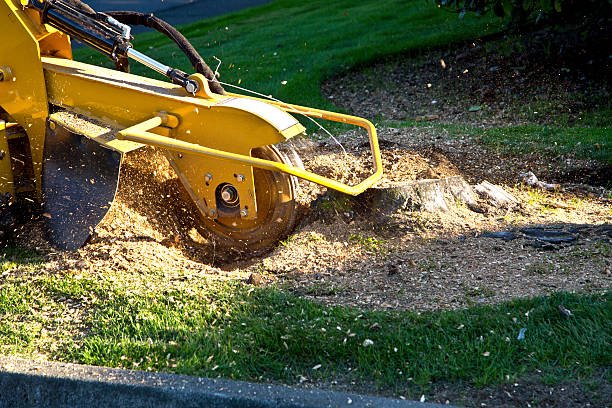Must Know 7 Mistakes While Installing Pond Lining Sheet
Pond lining sheets play a crucial role in maintaining the integrity of ponds, preventing water seepage, and enhancing their longevity. However, many mistakes can occur during the installation process, compromising the effectiveness of the lining and leading to costly repairs. Understanding these common errors will help ensure a smooth installation process and long-lasting results.
1. Inadequate Site Preparation
One of the most common mistakes is improper site preparation. The area where the pond lining sheet will be installed needs to be free from sharp objects such as stones, roots, and debris. Failing to properly clear the site can cause punctures or tears in the lining sheet, leading to leaks. Before installing the lining, we recommend:
- Clearing all potential hazards from the site.
- Leveling the ground properly to prevent uneven stress on the sheet.
- Ensuring there is sufficient padding (such as sand or geotextile underlay) to protect the liner.
Neglecting site preparation can result in early damage to the lining, reducing its lifespan and requiring frequent maintenance.
2. Using the Wrong Type of Liner
Choosing the wrong type of pond lining sheet for your specific pond conditions can lead to several issues. Not all liners are created equal, and selecting the right material based on the pond’s purpose, size, and environmental conditions is essential. Some common options include:
- HDPE (High-Density Polyethylene): Suitable for large ponds due to its durability and resistance to UV rays and chemicals.
- EPDM (Ethylene Propylene Diene Monomer): Ideal for smaller, more decorative ponds as it’s flexible and easy to install.
- PVC (Polyvinyl Chloride): Cost-effective but less durable and can degrade over time when exposed to sunlight.
We recommend conducting thorough research or consulting with a professional to ensure the lining material is suitable for your specific application. Using the wrong type of liner can lead to premature wear and tear.
3. Not Accounting for Liner Size and Overlap
Another mistake many make during pond liner installation is inaccurately measuring the size of the liner needed. Insufficient liner size will force you to stretch it, increasing the risk of tearing and weakening the structure over time. It’s essential to:
- Measure the pond dimensions carefully, including length, width, and depth.
- Account for extra material for overlap and secure anchoring along the edges of the pond. A minimum overlap of 12-18 inches is recommended to ensure proper sealing and edge protection.
Avoid the costly mistake of ordering a liner that’s too small by taking precise measurements before purchase.
4. Failing to Smooth Out Wrinkles During Installation
A crucial step often overlooked is ensuring that the lining is properly laid without wrinkles or folds. Wrinkles not only affect the visual appearance of the pond but also create weak spots that can lead to tearing or water accumulation. These areas become more prone to punctures and stress over time. We recommend:
- Laying out the liner carefully and smoothing out all wrinkles by hand or using a roller.
- Working slowly, starting from the center and moving outward to ensure a flat, smooth surface.
Taking the time to smooth out wrinkles will improve the overall performance and durability of the liner.
5. Improper Seaming or Joining Techniques
In larger ponds, multiple sheets of pond lining are often required. Incorrect seaming or joining techniques between sheets can lead to leaks or structural failures. The key to ensuring strong, leak-proof seams includes:
- Using the correct seaming tape or adhesive designed for your liner material.
- Ensuring the seams are clean and free from debris before applying adhesive.
- Applying consistent pressure across the seams to bond the sheets effectively.
Proper sealing of seams is vital to maintain the waterproofing capability of the liner. If not done correctly, it can result in significant water loss and compromise the entire pond setup.
6. Inadequate Edge Securing and Anchoring
Once the pond lining sheet is laid, proper securing and anchoring of the edges is critical to prevent movement or slippage over time. A common mistake is leaving the liner unsecured, which can cause it to shift, allowing water to seep underneath. To avoid this:
- Bury the edges of the liner securely in a trench around the pond perimeter.
- Use heavy rocks or paving stones along the edges to hold the liner in place.
- Ensure the liner is anchored tightly to prevent any movement during pond usage.
Properly securing the edges is essential to ensure the longevity of the pond liner and prevent potential leaks.
7. Ignoring Maintenance After Installation
Finally, a major mistake is neglecting regular maintenance after the installation of the pond lining sheet. Over time, environmental factors such as tree roots, wildlife, or sharp objects can compromise the integrity of the liner. We recommend:
- Inspecting the pond liner regularly for punctures, tears, or weak spots.
- Removing debris such as fallen branches or sharp objects that could damage the liner.
- Checking the water level periodically to ensure no significant loss is occurring due to leaks.
Conclusion
By avoiding these common mistakes when installing a pond lining sheet, you can ensure a more durable and effective pond setup that will last for many years. Proper site preparation, liner selection, seaming, and regular maintenance are critical steps that should not be overlooked. Taking the time to follow best practices will help prevent costly repairs and water loss, ensuring a healthy and vibrant pond environment.






